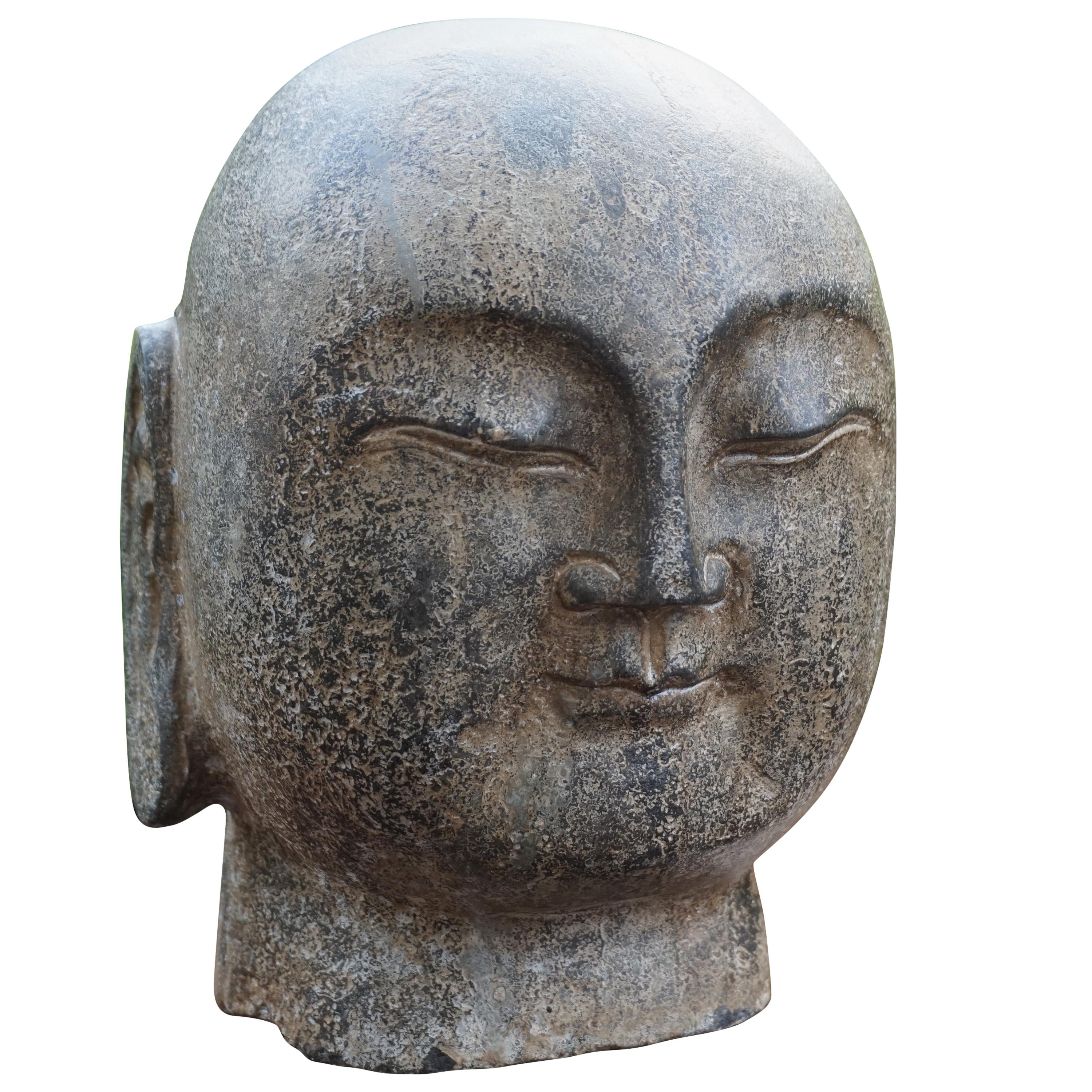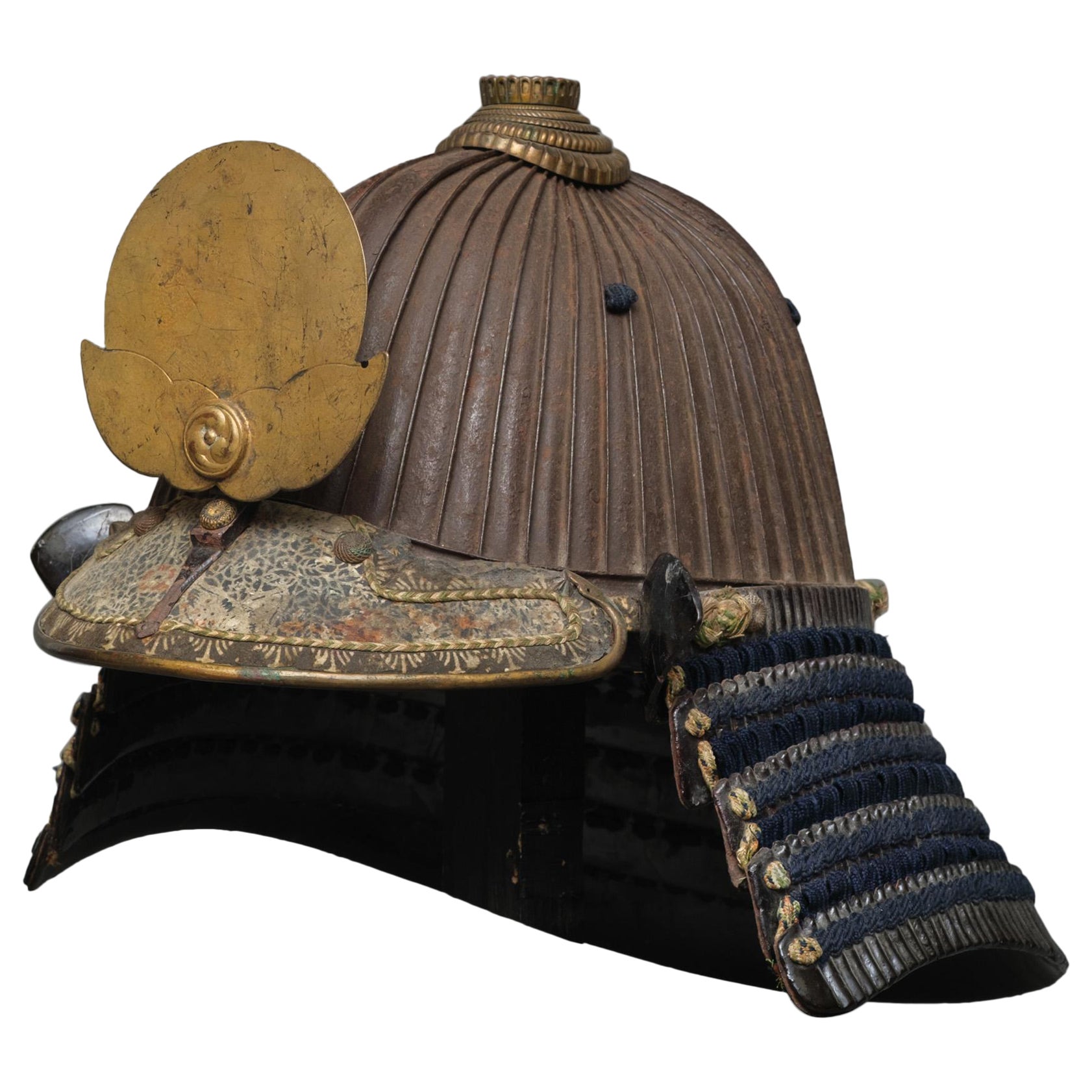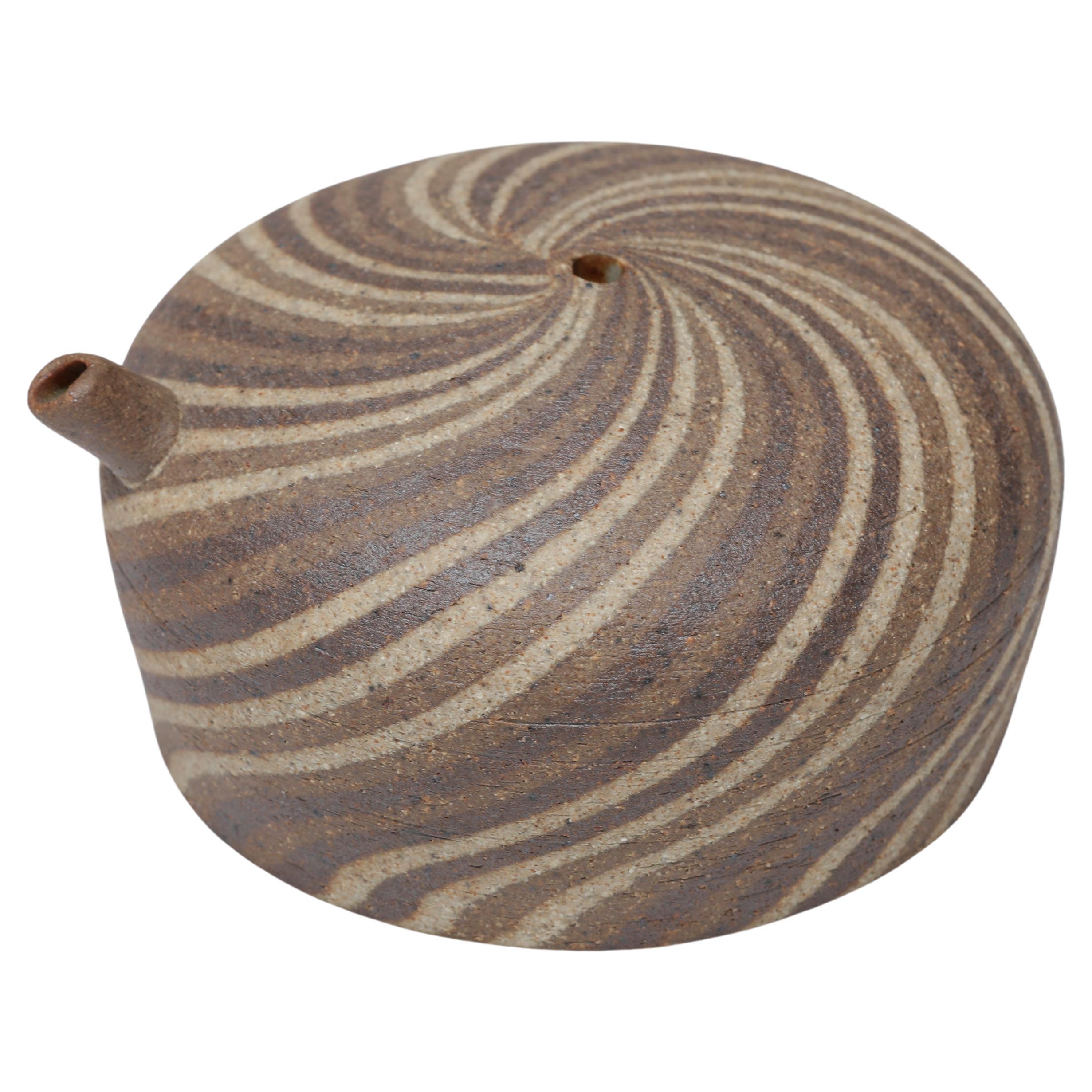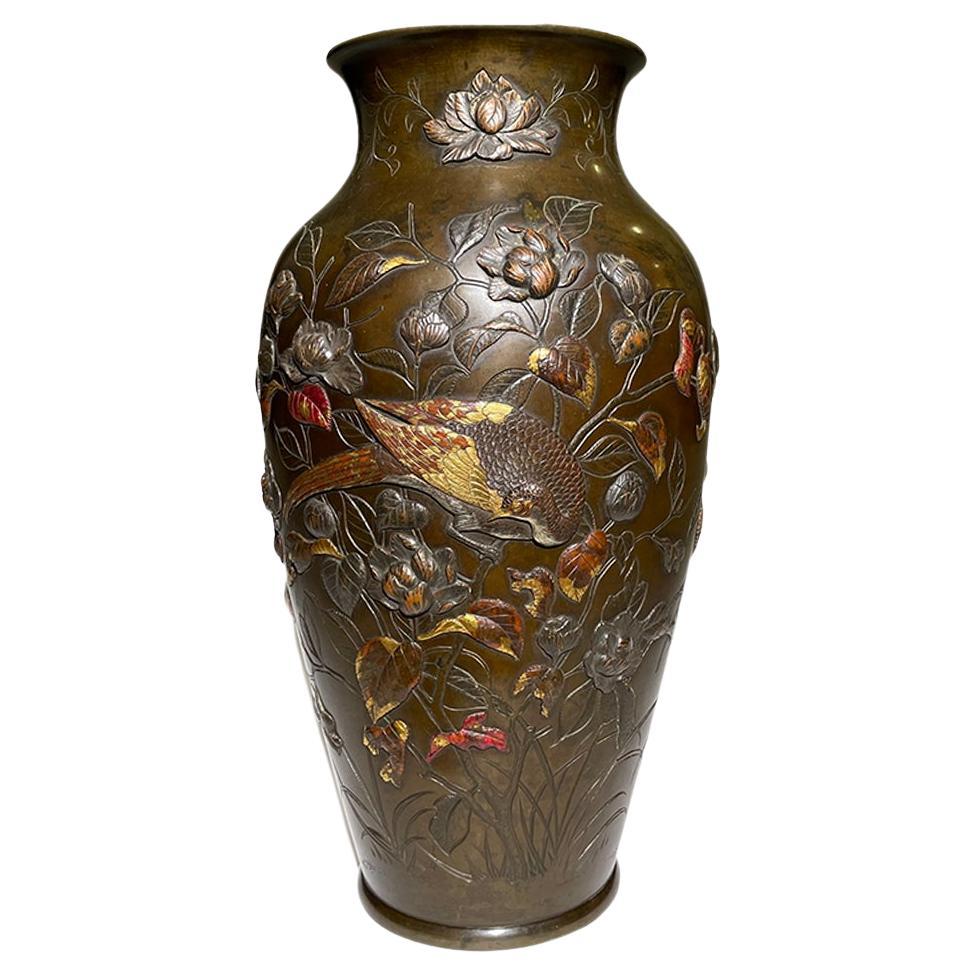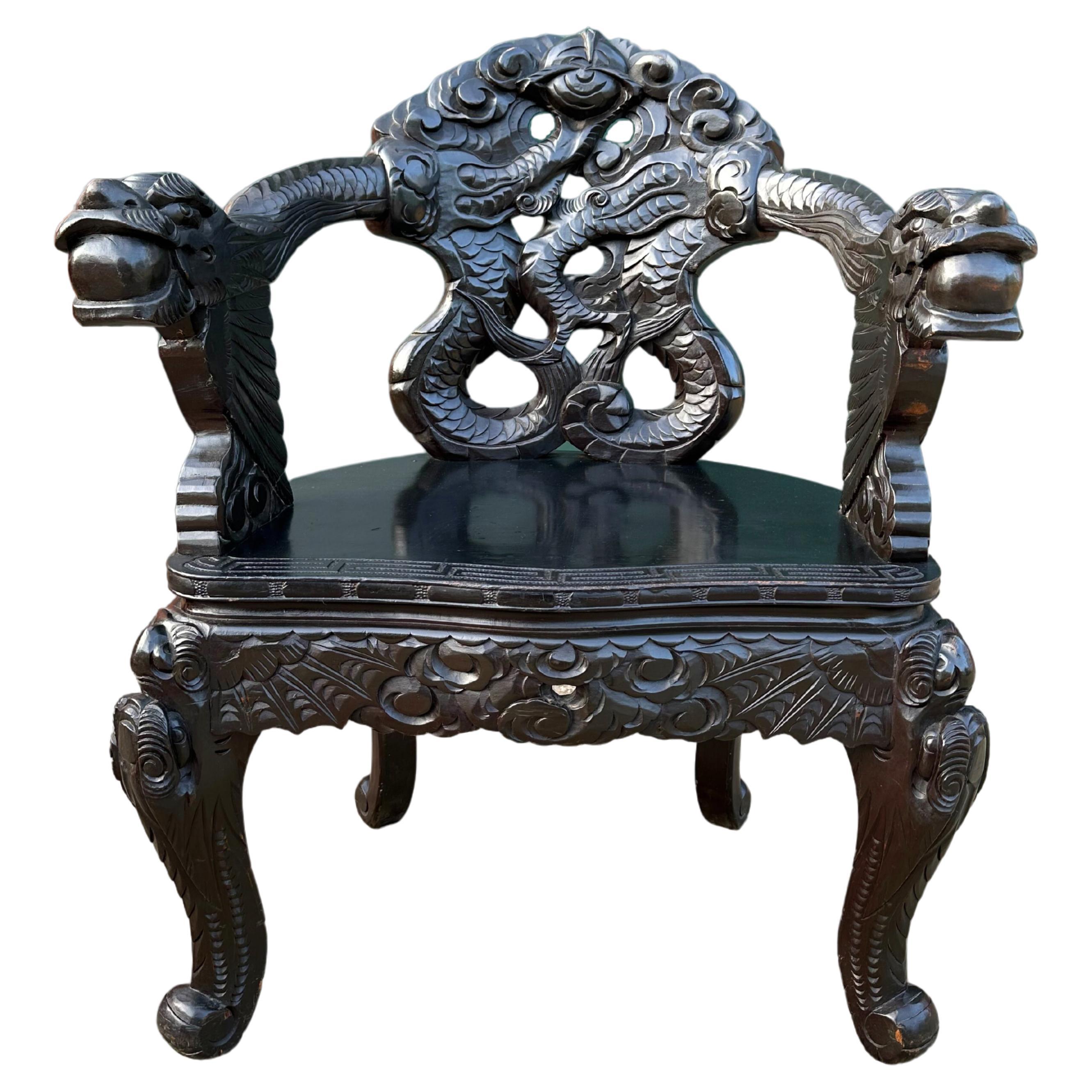Items Similar to Antique Japanese granite chôzu’bachi 手水鉢 (water basin) with carved Buddha design
Want more images or videos?
Request additional images or videos from the seller
1 of 14
Antique Japanese granite chôzu’bachi 手水鉢 (water basin) with carved Buddha design
About the Item
Exceptional, traditional Japanese granite chôzu’bachi (water basin) that is square of shape with on the top surface a cylindrical water pool and a carved design on each side of a Buddha figure seated in a mediative pose on a lotus throne surrounded by a cartouche with an accolade arch.
All depicted seated in their own poses as they all represent a different Buddha: Yakushi (Jôruri - East), Shakyamuni (Shaka - South), Amithaba (Amida - West) and Maitreya (Miroku - North).
This type of basin is known as ‘Shihôbutsugata chōzubachi’ (lit. ‘Four-Buddhas basin’), another pronunciation is Yohôbutsugata chōzubachi’. It is said that tea masters disliked the letter "shi" of Shihôbutsu and called it "Yohôbutsu" instead.
Chôzu'bachi, also known as a water reservoir for the hands, is an ornamental feature frequently encountered in traditional Japanese gardens. Its purpose extends beyond mere decoration, as it serves as a vessel for ritual hand washing and mouth cleansing. Prior to engaging in the tea ceremony or stepping onto sacred grounds like Buddhist temples and Shinto shrines, individuals partake in this purifying act. Chôzu'bachi embodies a profound cultural significance, emphasizing the importance of cleanliness and spiritual preparation in Japanese traditions.
Dimensions:
Height 14.17 in/36 cm, Width & Depth 13.58 in/34.5 cm.
The water pool: Diameter 7.87 in/20 cm, and 3.93 in/10 cm deep.
Weight 219.36 lb/99.5 kg.
The age of such hand-carved objects is difficult to determine. We think that this one is from the 19th century (Late Edo period/Meiji period), but it easily can be even older. It has attractive ‘soft’ contours indicating weather corrosion for many years, a great sign of its older age.
Shipping of this water basin is relatively easy. We will use a wooden pallet and good packing for safe transport.
When shipped we will add a certificate of authenticity.
Kindly get in touch with us so that we can offer you an appropriate shipping quotation.
- Dimensions:Height: 14.18 in (36 cm)Width: 13.59 in (34.5 cm)Depth: 13.59 in (34.5 cm)
- Materials and Techniques:Granite,Hand-Carved
- Place of Origin:
- Period:
- Date of Manufacture:19th century (Late Edo period/Meiji period)
- Condition:Wear consistent with age and use. It is in a very good original condition. Please look at the photos for a condition reference. And see description.
- Seller Location:Amsterdam, NL
- Reference Number:
About the Seller
5.0
Vetted Seller
These experienced sellers undergo a comprehensive evaluation by our team of in-house experts.
Established in 1996
1stDibs seller since 2022
16 sales on 1stDibs
Typical response time: 8 hours
- ShippingRetrieving quote...Ships From: Zwanenburg, Netherlands
- Return PolicyA return for this item may be initiated within 14 days of delivery.
More From This SellerView All
- Signed Japanese Edo suji’bachi kabuto (helmet) with a moon & cloud maedateLocated in Amsterdam, NLAn antique, outstanding signed suji’bachi kabuto (helmet with ridges) surmounted by a gilt metal maedate (forecrest) shaped like a full moon emerging from the clouds heightened by a ...Category
Antique Early 19th Century Japanese Antiquities
MaterialsMetal, Iron
- Pair of Japanese cast iron chôshi 銚子 (sake kettles) with lacquered lidsLocated in Amsterdam, NLPair of enticing cast iron chôshi (sake kettles) with a detailed lacquered lid, raised by three low feet. Its rotund body with a subtle embossed design of stylized symbols, like myth...Category
Antique Early 19th Century Japanese Antiquities
MaterialsSilver, Iron
- Rare set of 2 Japanese suits-of-armour, complete with 2 matching folding screensLocated in Amsterdam, NLImportant unique set of two suits-of-armour (yoroi), complete with two high six-panel screens, that belong together as is indicated by the used family crests (mon). Two crests are used, both belonging to the Nakagawa family of Oka Castle, Ôita prefecture on Kyûshû. They are: – the Nakagawa-kurusu, a circle depicting a Celtic-like cross through a ring. The cross was originally a Christian symbol but after the ban on Christianity in Japan the use of a hidden cross in family crests could continue. – the Nakagawa-kashiwa, two leaves of the Japanese Emperor Oak turned to each other (dakikashiwa mon). The remarkable aspect of this ensemble is the presence of matching crests on both the yoroi and the accompanying folding screens. The kurusu and kashiwa crests adorning the yoroi are elegantly replicated on the screens, providing compelling evidence that these pieces form a harmonious and unified set. This exceptional cohesion between the armour and screens further enhances their artistic and historical value. After the warlord Toyotomi Hideyoshi (1537-1598) had interfered in the battle between the Lord of Bungo Province Ôtomo Yoshi-mune (1558-1605) and the Shimazu of Hyûga Province, he split the Bungo Province in a number of small fiefs and transferred in 1594 Nakagawa Hideshige (1570-1612) from Miki Castle in the Harima Fief to Oka Castle in Kyûshû. The Nakagawa family stayed in possession of Oka Castle till the abolishment of the military use of castles in 1873. In 1884 the Nakagawa family received the title of Count (a title in use till the abolishment of aristocracy in 1947). After the Nakagawa’s left, the castle and the building soon dilapidated and is now known as Oka Castle Ruins. The castle is located in Taketa Village part of Taketa Town in Ôita Province on Kyûshû. > Set of two tall byôbu (folding screens), painted with large red jinmaku (camp enclosure curtain) on a gold leaf ground. The curtains show both crests of the Nakagawa family: one screen depicts two Nakagawa-kurusu crests next to a Nakagawa-kashi crest in the middle, and the other shows the symbols the other way round. Dimensions: Total width 148.66 in/377.6 cm (2 x 25.35 in/64.4 cm, 4 x 24.48 in/62.2 cm); Height 72.63 in/184.5 cm. Period: Japan – Late Edo period (First half 19th century), and maybe even older. > Yoroi with Nakagawa-kashiwa crest: A Japanese black lacquered suit-of-armour (yoroi) completely laced with orange cords (kuro’urushinuri hi’ito odoshi nimai’dô’maru). A thirty-two plate suji’bachi kabuto (helmet with raised ridges) with in front a maedate (fore crest) -with traces of gilding- in the shape of flames, resembling a mythical flaming bird flying down. The fukikaeshi (face guards) and the mabizashi (visor) have the Nakagawa-kashiwa crest in gold maki-e lacquer. Five curved ‘itazane’-plate neck guards (shikoro) laced with orange cords. Together with an ‘angry man...Category
Antique 18th Century Japanese Antiquities
MaterialsGold Leaf, Iron, Metal
- Red lacquer Festival Flag Support abundantly inlaid with mother-of-pearl, JapanLocated in Amsterdam, NLRare museum-worthy Japanese lacquered wooden festival support for a flag. In feudal Japan this kind of supports sat on the back of a horse or ox during pr...Category
Antique 19th Century Japanese Antiquities
MaterialsMetal, Bronze, Copper
- Japanese Edo-period gosho’ningyô 御所人形 (palace doll) of plump, seated childLocated in Amsterdam, NLA charming gosho’ningyô (palace doll) of plump, seated child with a brilliant white skin and a small delicately elegant face, reminiscent of a young noble. The doll is playfully rais...Category
Antique Early 19th Century Japanese Antiquities
MaterialsPaste, Silk, Paint
- Capital Japanese Imari-verte porcelain vase with bijin 美人 designLocated in Amsterdam, NLAn imposing, capital Japanese Imari-verte porcelain vase with hand-carved hard wooden cover. The vase, in a baluster shape, showcases a vibrant and continuous scene of elegant ladie...Category
Antique Late 19th Century Japanese Ceramics
MaterialsEnamel
You May Also Like
- Rare Hand Carved Antique Japanese Marble or Granite Buddha Head SculptureLocated in Lisse, NLStunning and one of a kind Buddha sculpture. There are only very few people in the world who can accurately date this hand carved marble or granite Japanese Buddha head...Category
Early 20th Century Japanese Antiquities
MaterialsMarble
- Japanese Pottery Water Dropper, Swirl DesignLocated in Santa Cruz, CAJapanese Pottery Water Dropper executed in a Swirl Design A water dropper is used in calligraphy as a small container to hold a small amount of water to make ink for calligraphy.Category
20th Century Japanese Antiquities
MaterialsPottery, Clay
- Carved Polychrome Standing Buddha FigureLocated in Houston, TXA 25.25 inch tall antique carved polychrome standing Buddha Amitabha. The Buddha of infinite light.Category
20th Century Chinese Antiquities
MaterialsWood
- Japanese Antique Bronz Gilt Vase with Flower and Bird Design, Meiji PeriodLocated in Chuo-ku, TokyoThis work is produced by Egawa, a master craftsman from the Meiji era. It can be said to be a representative of brilliant metalworking technology. "Kaga zougan", an excellent met...Category
Antique Late 19th Century Japanese Antiquities
MaterialsBronze
- Antique Japanese Export Meiji High Relief Dragon Carved Throne Chair.Located in Nantwich, GBAn impressive Imperial Meiji period Japanese throne chair which is finely and lavishly carved with dragons holding the eternal pearl in their mouths. ...Category
Antique 19th Century Japanese Meiji Antiquities
MaterialsWood
- Japanese Antique Hanten with Cotton showa (ver1960s)Located in Paris, FRHanten is a type of traditional Japanese garment that is often referred to as a "short coat" or "jacket". `it has a loose, kimono-like design with a straight collar and is typically ...Category
Vintage 1960s Japanese Antiquities
MaterialsCotton
Recently Viewed
View AllMore Ways To Browse
Antique Water Can
Antique Water Cans
Antique Watering Can
Antique Watering Cans
Antique Carved Japanese Furniture
Carved Buddha
Antique Water Feature
Antique Carved Buddha
All Good Weather
20 Century Japanese Furniture
Carved Granite
Asian Wooden Sign
Antique Hand Basin
Antique Pool
Antique Granite
Asian Arch
Antique Washing
Antique Wooden Arches
